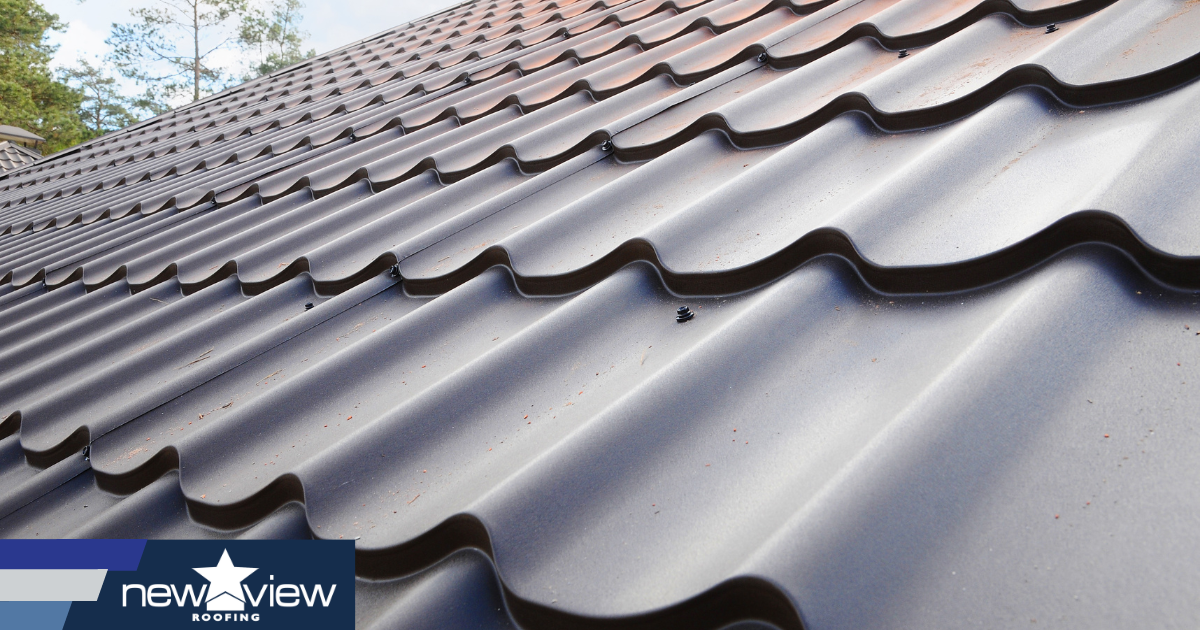The Advantages of Working with Gainesville FL Roofing Companies
The Advantages of Working with Gainesville FL Roofing Companies
Blog Article
Best Practices for Ensuring Correct Roof Covering Ventilation
Making certain appropriate roofing air flow is essential for the long life and effectiveness of a roof. A balanced consumption and exhaust vent ratio, frequently 1:300, plays a critical duty, with intake vents preferably put at the lower side of the roof for cool air access and exhaust vents at the optimal for warm air departure. Routine evaluations to determine obstructions and maintain clear air movement are paramount. Additionally, maintaining insulation away from vents is important to avoid air movement restriction. Comprehending these fundamental elements establishes the stage for even more comprehensive understandings into installation and upkeep practices that can dramatically improve your roof system's efficiency.
Understand Ventilation Essentials
Effectively understanding ventilation essentials is vital for ensuring the longevity and effectiveness of roofing systems. Efficient ventilation minimizes wetness build-up and temperature extremes in the attic, both of which can result in significant structural damage in time. A well-ventilated roofing system assists in stopping typical problems such as mold and mildew development, timber rot, and ice dams, which can jeopardize the stability of the roof materials and the underlying structures.
The primary objective of air flow is to assist in the motion of air, permitting a consistent exchange between the outside and indoor environments. This balance is achieved via a mix of intake and exhaust vents that interact to keep ideal air flow. Intake vents, normally located along the eaves or soffits, enable fresh air to get in the attic space, while exhaust vents, frequently located at or near the roofing system ridge, allow warm, moist air to run away.
Secret aspects influencing the performance of roof covering air flow consist of proper positioning, sufficient sizing, and ensuring that both consumption and exhaust vents are unblocked. Routine inspection and maintenance are vital to recognize prospective blockages, damages, or inadequacies in the air flow system, thereby guarding the roofing system's performance and resilience.
Kinds Of Roofing System Vents
Roofing vents play a vital role in maintaining effective attic air flow and, by extension, the general health and wellness of the roofing system. Numerous sorts of roof vents are offered, each with special benefits tailored to certain roof covering requirements. Ridge vents, as an example, are mounted along the roof's optimal, enabling cozy, humid air to escape from the attic. They provide continual air flow and blend perfectly with the roofline, making them both effective and aesthetically pleasing.

Soffit vents are mounted under the eaves and operate in tandem with roofing system vents to make certain a balanced consumption and exhaust system. By allowing cooler air to go into from below, soffit vents facilitate the expulsion of hot air with top vents. Gable vents, located on the exterior walls of the attic room, deal an additional efficient service, especially in homes with saddleback roofs.
Assess Your Present Ventilation

Next, think about the age and condition of your roof covering materials and ventilation parts. Older systems may not conform with existing building regulations or might have worn away over time, lowering their effectiveness. Conduct an extensive examination to recognize any signs of damage, such as rust, damages, or voids that can jeopardize the system's efficiency.
Furthermore, measure the attic room temperature and humidity degrees. High temperatures and humidity can indicate insufficient ventilation.
Installation Best Practices
Effective setup of roof covering air flow systems is vital for making certain ideal performance and durability. Appropriate installment begins with recognizing the specific ventilation requirements of the building and the roofing system it covers. This entails calculating the appropriate ratio of consumption to exhaust vents, normally sticking to the 1:300 regulation, which states one square foot of air flow for every single 300 square feet of attic room flooring area.

The placement of vents is just as vital. Intake vents must be installed at the roofing's reduced edge, frequently in the soffits, to permit amazing air to get in. Exhaust vents, on the other hand, must be installed near or at the roofing's optimal to promote the leave of cozy, wet air. This creates an all-natural airflow that aids preserve temperature and wetness equilibrium within the attic area.
Seal all air vent links meticulously to stop air leakages and potential water infiltration. Use top notch products and adhere to manufacturer guidelines to make certain toughness and effectiveness. Furthermore, incorporating ridge vents with baffles can significantly improve air movement performance by stopping wind-driven rainfall and snow from going into the attic.
Inevitably, precise installation of roofing air flow systems alleviates prospective problems such as mold development, ice dams, and architectural damages, making certain the roofing system's stability and the building's overall health and wellness.
Routine Maintenance Tips
Uniformity in maintenance methods is fundamental to making sure address the long-lasting efficiency of roofing air flow systems. Throughout these assessments, make sure that vents are cost-free of particles, nests, and various other blockages that could hinder air flow.
Use a soft brush or a vacuum cleaner to eliminate dirt and particles from consumption and exhaust vents. Be mindful not to harm the vent screens or louvers during the process.
Appropriate insulation is just as crucial. Make sure that attic room insulation does not block the vents, as this can severely limit airflow. Rearrange or change it to preserve a reliable obstacle. if any insulation has changed or resolved.
Finally, replace any kind of harmed or missing out on parts quickly. Damaged vents, fractured shingles, or worn-out blinking can all add to inadequate ventilation and must be addressed right away. Routine upkeep makes certain that the roofing air flow system operates ideally, therefore prolonging the life-span of the roof covering itself.
Verdict
Ensuring correct roof ventilation is paramount for keeping the performance and longevity of a roofing system. Adherence to the 1:300 intake and exhaust vent proportion, paired with the tactical explanation positioning of vents, is crucial. Normal biannual assessments, debris cleansing, and making certain insulation does not block air flow are crucial practices. Carrying out these finest practices will certainly promote a well-ventilated roof covering system, consequently reducing possible problems connected to moisture buildup and excessive warmth, ultimately prolonging the roof covering's life expectancy.
A well balanced consumption and exhaust air vent ratio, frequently 1:300, plays a pivotal role, with consumption vents ideally positioned at the lower edge of the roof covering for amazing air access and exhaust vents at the peak for warm air leave. Intake vents, normally situated along the soffits or eaves, allow fresh air to enter the attic space, while exhaust vents, commonly situated at or near the roofing system ridge, allow hot, damp air to get away.
Soffit vents are installed under the eaves and job in tandem with roof vents to guarantee a well balanced consumption and exhaust system. By permitting cooler air to enter from below, soffit vents Homepage help with the expulsion of hot air through top vents. Adherence to the 1:300 consumption and exhaust air vent ratio, combined with the critical positioning of vents, is important.
Report this page